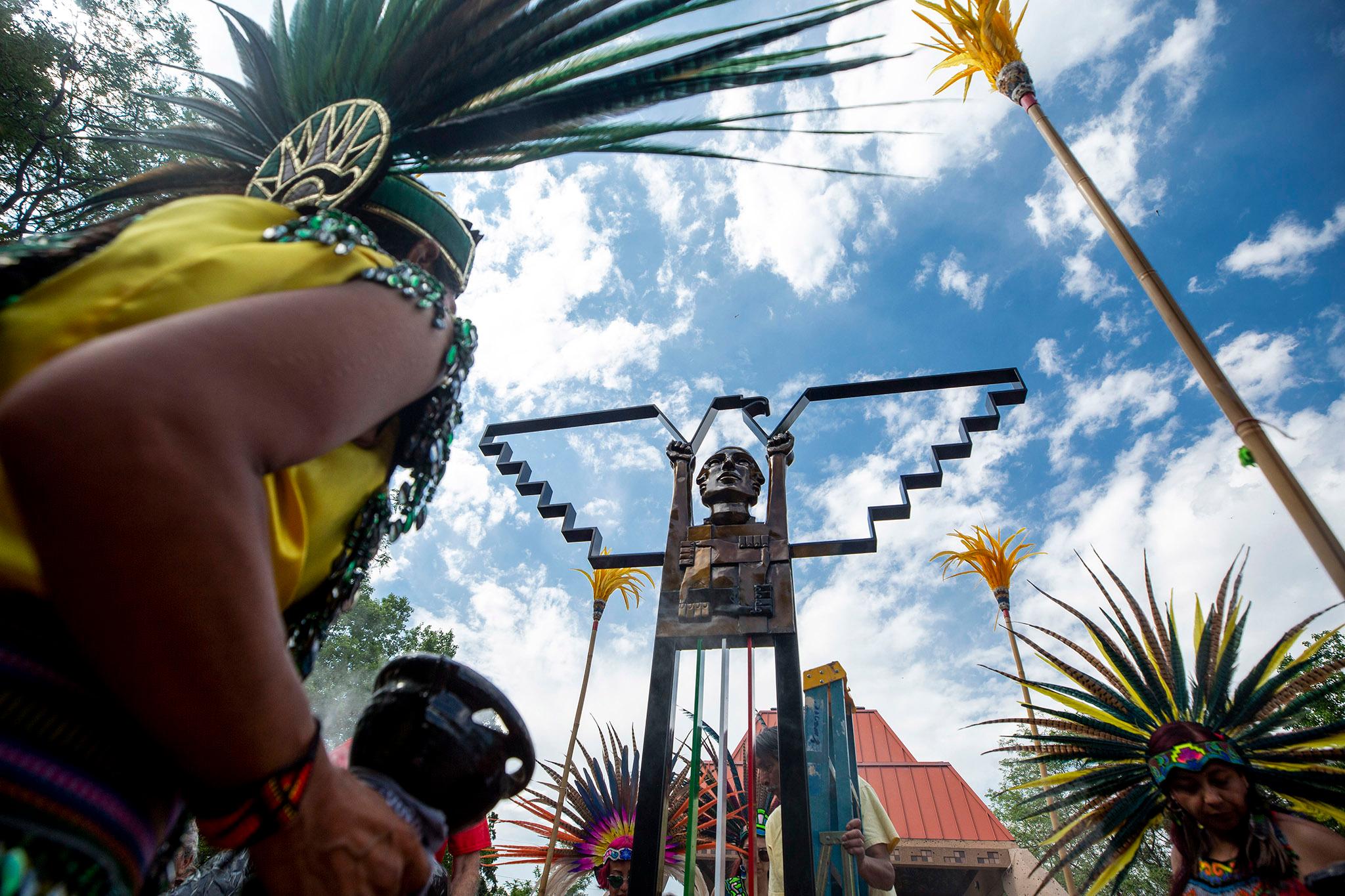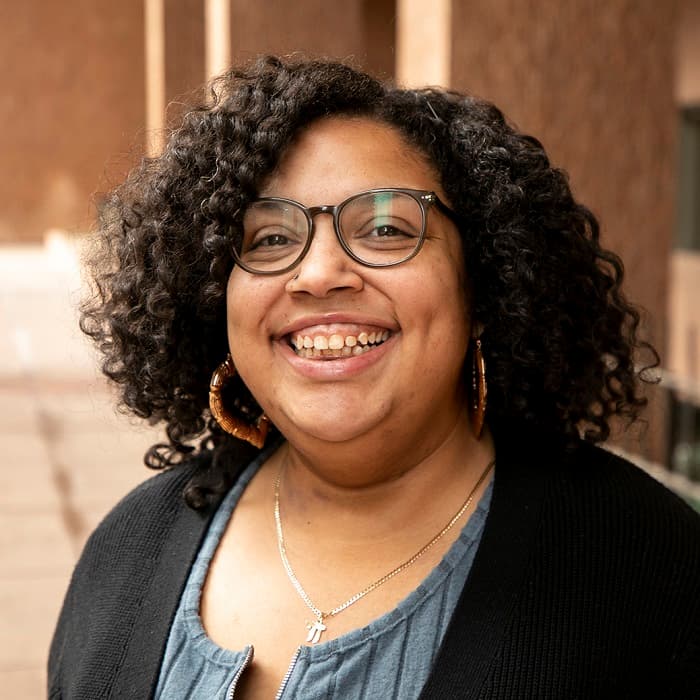La Raza Park, a place filled with historical relevance for residents of the Northside, will continue to be a staple in the area for decades to come.
On Monday, City Council unanimously voted to make La Raza Park the city's third historical cultural district. The designation will preserve several features of the park while allowing the space to grow in terms of playgrounds and picnic areas.
"I believe that 97% of our landmarks in Denver are from the Anglo side of history, of Denver and in my lived experience, that's not what makes up Denver," said Councilmember Amanda Sandoval, who applied for the designation. "It's important that I use my office to make sure that we're telling the other side of the story, of Denver's history. And for me, La Raza Park is that story."
Denver has a multitude of landmarks and historic districts, but city officials previously said about only 4% of the city's 7,200 historic properties were connected to minority communities.
In 2019, the city's Landmark Preservation Office allowed "culture" to be a criteria for landmarks and districts, allowing more buildings and places to be considered for preservation. From that change, the city's two existing historic cultural districts came to be: the Five Points Historic Cultural District and La Alma Lincoln Park Historic Cultural District.

Sandoval said the idea for the landmark proposal stemmed from a city project that looked to identify and catalog places related to Chicano and Latino residents. The goal was to identify culturally relevant places that could one day be landmarked for preservation. The city released the report last year titled "Nuestras Historias: Mexican American/Chicano/Latino Histories in Denver."
La Raza Park was one of the relevant places.
From a passerby's point of view, La Raza Park in the Sunnyside neighborhood, between Osage and Navajo Streets along W. 38 and 39th Avenues, is simply a nice piece of green space.
But in the grass lies a vast history of activism, art, riots, summer solstice celebrations and community.
Sandoval said writing this designation application was unique because the relevancy of the park goes back to the early 1900s. The land was purchased by the city in 1906 as part of the "City Beautiful Movement" initiative under then-Mayor Robert Speer, who sought to "beautify" Denver with paved roads, along with a clean and active park system (though that system came at the cost of demolished homes considered "slums.")

In 1931, the park was named Columbus Park after Christopher Columbus to honor the Italian residents who called the Northside home.
Around that time is when the park gained the now-infamous pool.
As the demographics in the area changed, the park still remained a vital community space to the neighborhood.
In the 60s and 70s, the park was home to the Chicano movement, which sought to expand civil rights and promote cultural expression through art and traditions. It's where Rodolfo "Corky" Gonzales and others gave speeches. It's where community members found job opportunities.
Then, in 1981, the park became the site of a riot. Residents gathered to celebrate the opening of the park for the summer, but Denver Police, armed with batons, forcefully and physically shut the event down. As community members responded by throwing rocks, police then began throwing tear gas into the crowd.
Three years later, the city filled in the pool. City officials said the pool had deteriorated to the point where fixing it didn't make financial sense, but residents felt the move was out of spite.

Out of that madness, the Kiosko and Plaza de la Raza were created and dedicated in the 90s. The Kiosko shaped like "ceremonial areas atop Aztec and Mayan stepped pyramids" became another gathering place similar to the pool.
In more recent events, the park was officially renamed La Raza Park in 2021, a community request made over 50 years ago. The park hosts solstice celebrations as well as low-rider shows.
Sandoval said gathering this history was made possible through the heavy involvement of community members who told their stories. Mainly, the verbal history was necessary because written documentation paints a one-sided and negative view of the park and Chicano residents.
"La Raza Park has not been on the map. It's been on the map for closing down our pool. It's been on the map for having police encounters in the 80s with community. But has it been on the map to talk about its cultural relevance to Denver, no. But it will," Sandoval said. "Anytime in the future when we talk about a cultural historic district, La Raza Park will be mentioned. It will be on the map."

With the designation, three features of the park cannot be changed: The Kiosko, Plaza de la Raza and the "La Raza Unida" sculpture.
Sandoval said those features represent the park's significance to the neighborhood and residents. The basketball court and playground, on the other hand, can be changed and additional park features can be added.
During the council meeting, several people spoke in favor of the designation. Arturo "Bones" Rodriguez said the designation was a "historical moment." Rodriguez was a part of the Chicano movement and worked as the first Chicano manager of the park's pool.
"We have been working in a collaborative effort with a lot of different entities for 54 years on the preservation, history and organizing and so forth of the park," Rodriguez said. "There's so much history to that park that the application does a very good job of giving you a general history."

Allen Cowgill said the designation is just one way to highlight significant cultural places in a city that's constantly changing.
"North Denver has seen so much change over the last few decades and it's important and very proper that we remember our history," Cowgill said. "I would like my kids to grow up in a Denver that remembers the history of our neighborhood and for them to know that this is an important place and a place for all of us to be proud of."
The Northside is changing. The neighborhoods that encompass the area are rich in history and culture, but they lay at the nexus of displacement and loss. Sandoval said she intends to continue pushing for more landmark designations that focus around culture, so that the history is never lost.
So that places like La Raza Park remain para siempre.
"Que viva la raza," Sandoval said.











